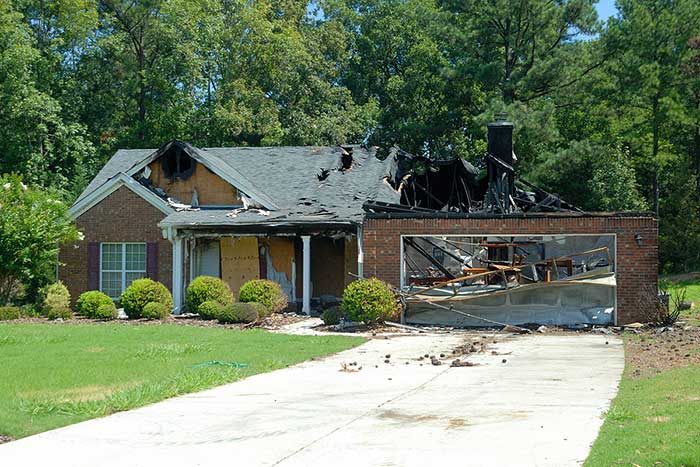Preparing for a disaster requires more than expecting the unexpected, and when it strikes, your initial response can mean the difference between a safe experience and personal harm. In the middle of downright devastating events, it’s easy to panic, but a simple plan of action can mitigate the fear and lead to safe decisions which impact you and your property. Fire, flood, tornado, wind damage, and other extreme weather occurrences can leave your property in an unsafe state and expose you to harm.

A single disaster may lead to multiple types of damage throughout your property. Fire brings with it the risk of structural damage followed by extensive water damage as firefighters seek to eliminate the fire. Smoke damage can ruin upholstery, closets, carpets, and clothes. While detaching from the event is a big ask, establishing a clear plan to implement safety measures may help clearer heads prevail in the midst of the extreme stress and trauma caused by the disaster.
Before any damage assessment and plan of action to recover your property can be implemented, safety must be a priority. There are many government agencies like ready.gov that offer a disaster preparedness plan. Questions of what can be salvaged will most likely wait while the property is secured, and understanding what is safe and what is off-limits will keep you out of danger.
Luckily, there are plenty of people who can help you find answers to these questions and help your panic evolve into at least a huge to-do list. It still will hurt but at least you’ll have some better direction and a sense of control more than sitting and watching the damage take place in real-time not knowing where to start.
“Dealing with any kind of disaster, especially one which causes damage to personal property, is traumatic and extremely difficult,” said a representative of BluSky Restoration Contractors, a national leader in disaster response restoration and remediation. “Responding properly in the aftermath is a challenge we know well, and in every decision, it’s important for property owners to remember that their safety is of utmost importance. Securing a disaster site is the first step in ensuring property owners, workers, and first responders avoid unnecessary harm.”
Immediately following a disaster, any first responders will ensure all affected people have received medical attention before leaving the scene. In the event of a fire, professionals are on the scene to reinforce safety measures and ensure you are not inserting yourself into an unsafe structure. If damage has occurred to the structure and you have not been instructed by a professional that it is safe to enter or remain inside, it is best to refrain from entering any buildings on the property until it has been cleared for re-entry.
Establish your in-case-of-disaster plan for where you will stay should something happen to your home. In large-scale disasters, seek out the community coordinator or first responders who will direct you to a common space where residents may take shelter or get further instruction. Your first call once all residents are safe is to your insurance company. An agent can help you navigate the next steps to ensure you’re safe and swiftly enacting the claims process. The claims process can take weeks or even months, and especially in the case of a large catastrophe, your early call will kick off the first steps and put you in the queue ahead of those who wait. Putting a trusted restoration and remediation company on your priority call list is vital to securing your property, your personal items, and your safety. Your restoration advisors will work with you and the insurance company to respond, assess, and secure property. Check ahead of time to ensure your restoration company of choice works with your insurance.
A quality restoration company can help with immediate fixes such as roof repairs and will have experience responding to disaster cleanup. Their primary goal is to secure the area and put heightened safety measures in place so that their crew can begin the cleanup process and perform any necessary demolition.
Keep your emergency items on hand for common disasters in your area. You often have minutes or less to gather items and retreat to safety, so keeping a go-bag with basic supplies and an easily accessible spot for important files and documents will save you future heartache as you navigate your property damage and displacement. Keeping duplicates of important documents off-site, like a safety deposit box, is another way to ensure you have the items you require if your property is destroyed or made unlivable for an extended period of time.
Remember, the more you wait after a disaster, the more you and your property are exposed to further harm. Government aid is often slow in reaching recipients after catastrophic occurrences, and it’s important to be prepared in the interim. Your first line of defense is to have a basic plan in place which includes contact information for your insurance company and a reputable restoration and remediation firm. Your safety depends on a clear head and a straightforward plan of action.
